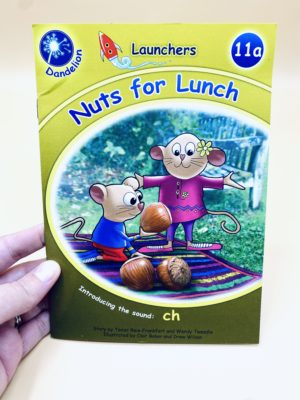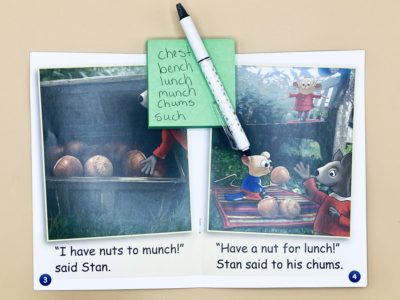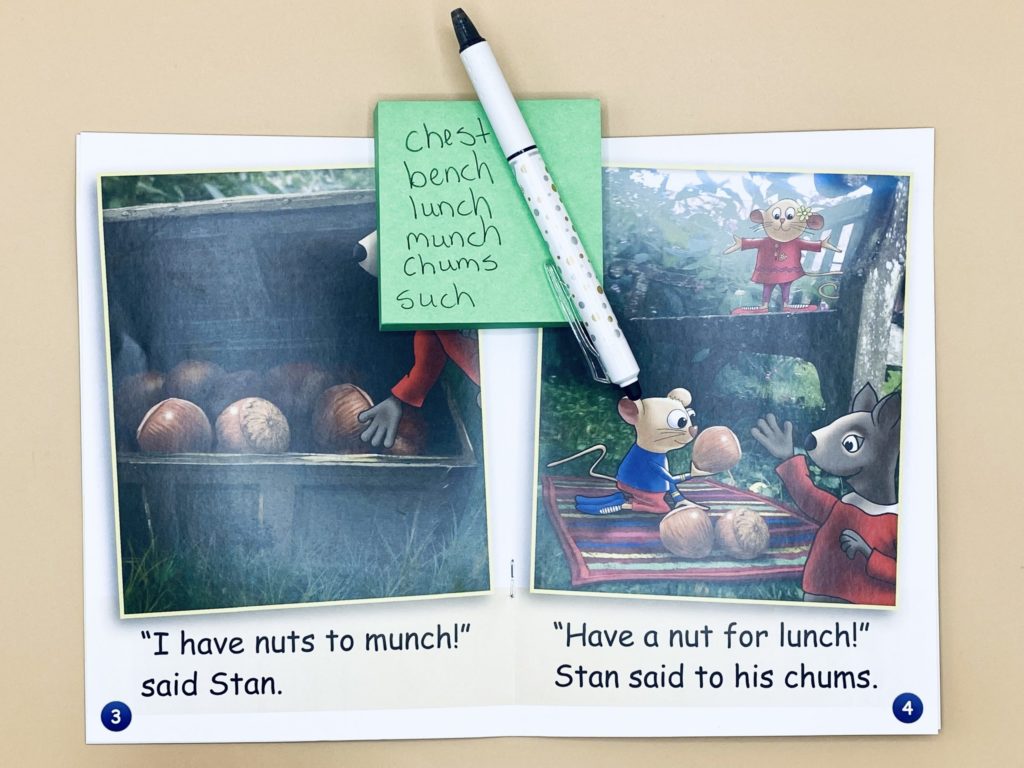Phonemic awareness and letter-sound knowledge are the biggest indicators of how well a child will learn to read in the first two years of school. Yet phonemic awareness and letter-sound knowledge are NOT the end goal. Our end goal will always be proficient readers. To reach that end, we must work to instruct children on how we represent those phonemes in print (graphemes). It is not the isolated activities, but the understanding of phoneme-grapheme correspondences, as well as practicing that connection, that will lead us to our ultimate goal.
Connecting phonics and phonemic awareness
We can connect phonics and phonemic awareness with the decodable texts we are already using. Let’s detail a few simple steps that teachers and parents can follow to strengthen both skills:

- Choose a decodable text that is appropriate for your student. (I recently chose “Nuts for Lunch” for my student practicing the digraph ch.)
- Before you meet with the student, identify the words in the book that follow the targeted skill. In this book, those words were: chest, bench, lunch, munch, chums, such.
- Use manipulatives to have students tap the sounds in the words that will appear in the text. For example, you could use cubes to tap chest into ch-e-s-t. (Please note, I’m not asking students to spell the word. This step is oral-only.) If there are more than 5-7 words, I recommend choosing the most important ones, so this step does not take too much time.
- Ask questions about some of the words. For example, “Where do you hear the /ch/ sound?” (Students would tap the cube where the sound was located.) “What is your vowel sound in this word?” (Students would respond with the vowel sound.)
- Look for words with the target skill inside the book. Have students read the words in isolation. Then, turn to the beginning of the book and have students read the entire connected text.

Easing cognitive burden for students
I would not follow this routine for every single text I ask my students to read. However, when students are first learning a skill, this kind of practice can lead to significant payoff. When we take the time to identify target graphemes, we ease some of the cognitive burden for our students.
This activity doesn’t need any materials other than a decodable text and manipulatives for tapping sounds. It is a simple, yet effective practice that anyone can use to help bridge phonemic awareness and phonics. Moving forward, always remember—it is not the isolated skills that are our end goal, but proficient reading!
#phonics #phonemicawareness #decodablebooks #teachingreading #manipulatives #makelearninginteresting
Check out our decodable books for beginner readers here.
***
This is a guest blog by Savannah Campbell, who is a K-5 reading specialist. She has taught her entire career at the school she went to as a child. She holds two master’s degrees in education from the College of William and Mary. Savannah is both Orton-Gillingham and LETRS trained. Her greatest hope in life is to allow all children to live the life they want by helping them to become literate individuals.


